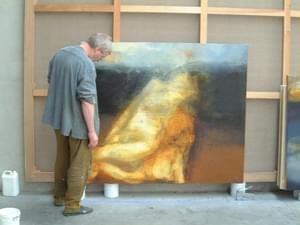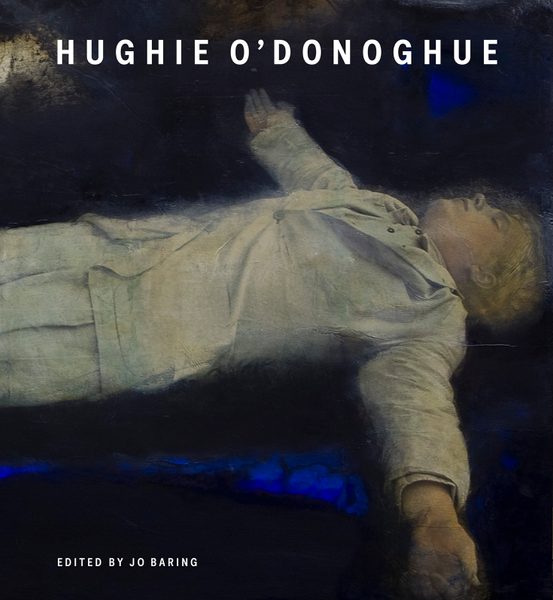Hughie O'Donoghue
Born in Manchester, England, in 1953, Hughie O'Donoghue's Irish heritage and deep connection to his roots have had a profound influence on his artistic expression. His exploration of personal and collective memory is highly individual and he is considered amongst Ireland’s most important artists.
O'Donoghue's work primarily revolves around the human figure, depicted on occasion in introspective, contemplative poses. His often vibrantly coloured paintings are richly layered, generally large in scale and are characterised by elaborately textured surfaces and a particular use of the medium. There is significant depth and emotional resonance in his works and his charcoal drawings display an uncommon technical dexterity.
One of the most significant aspects of O'Donoghue's oeuvre is his exploration of the themes of identity, memory, and history. The artist frequently draws on historical events, mythological narratives and personal experiences, presenting a complex and multifaceted compendium of works. O'Donoghue's ability to merge the personal and the universal on a grand scale allows viewers to engage with his art in a practically immersive fashion.
Several museums have given O'Donoghue solo exhibitions including Haus der Kunst, Munich; Imperial War Museum, London; Fitzwilliam Museum, Cambridge; The Gemeentemuseum, The Hague and The National Gallery of Ireland, Dublin. He was artist in residence at the National Gallery, London from 1984-85.
Throughout his career, O'Donoghue has created notable series of works. His early, monumental series Sleeper and Red Earth interpret the history of the ground itself, exploring what the soil may hold and why: examining the bodies placed in it or that may have fallen or otherwise come to be there.
The discovery of his father’s war diaries led to the series A Line of Retreat. Interpreting moments from the soldier’s experiences throughout the Second World War became a starting point for a prodigious consideration of that period through the medium of richly surfaced paint and heavy carborundum etchings. O'Donoghue's ability to merge history and personal experience frequently creates a compelling, resonant narrative.
ARCHEUS / POST-MODERN are principal dealers in Hughie O'Donoghue's early works and his graphic works.
The following institutions hold his work:
Arts Council of Great Britain
Art Gallery of South Australia, Adelaide, Australia
Ashmolean Museum, Oxford
Birmingham Museum & Art Gallery
British Museum
Cartwright Hall Art Gallery, Bradford
Chester Beatty Library, Dublin
Cleveland County Museums, Middlesbrough
Crawford Art Gallery, Cork
Djanogly Art Gallery, University of Nottingham
Dublin City Gallery, Hugh Lane, Dublin
Eton College, Windsor, Berkshire
Ferens Art Gallery, Hull
Fitzwilliam Museum, Cambridge
Gemeentemuseum, Den Haag, Netherlands
Huddersfield Art Gallery
Hugh Lane Municipal Gallery of Modern Art, Dublin
Hunt Museum, Limerick
Hunterian Art Gallery, University of Glasgow
The Imperial War Museum, London
The Irish Museum of Modern Art, Dublin
Mayo General Hospital
Michigan Museum of Art, Ann Arbor
National University of Ireland, Cork
National University of Ireland, Galway
National University of Ireland, Maynooth
The National Gallery, London
The Royal Collection, Windsor Castle
St John’s College, University of Oxford
Trinity College Dublin
Trinity Hall, Cambridge
Ulster Museum, Belfast
Victoria Art Gallery, Bath
Whitworth Art Gallery, Manchester
Yale Center for British Art, New Haven




